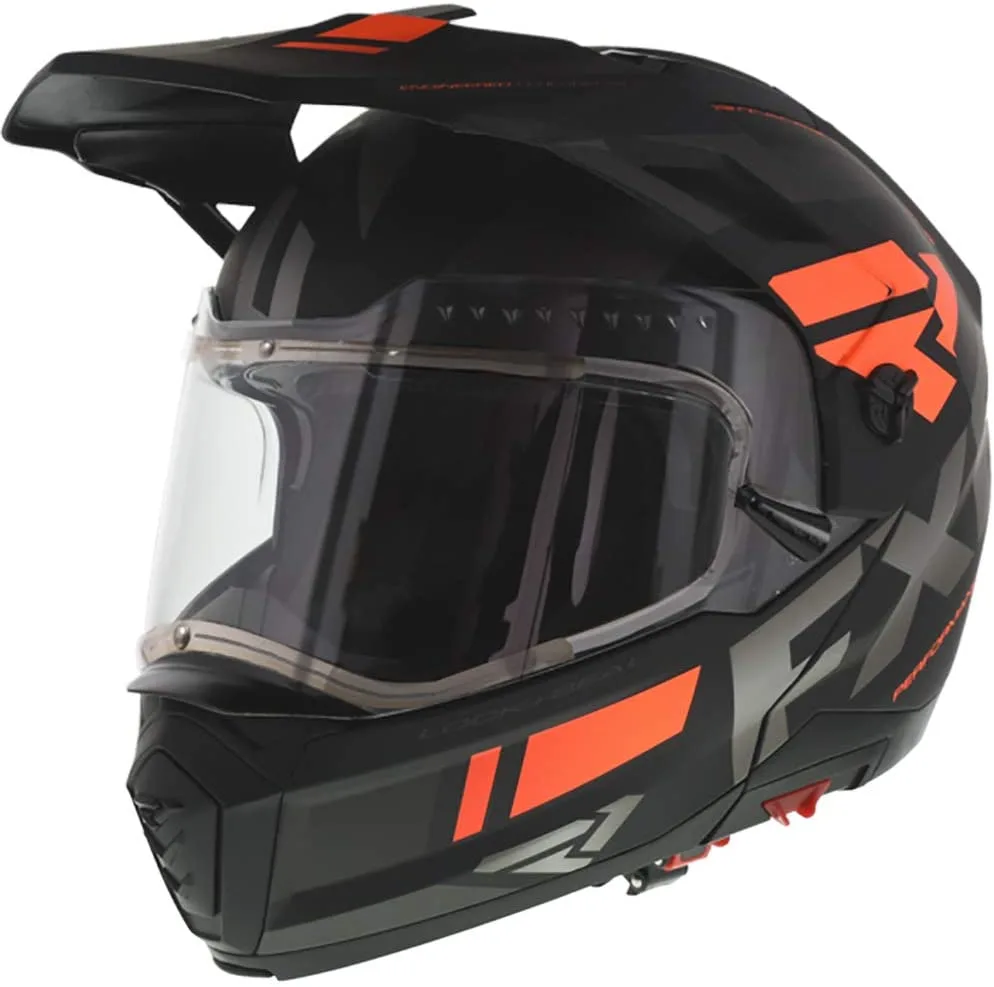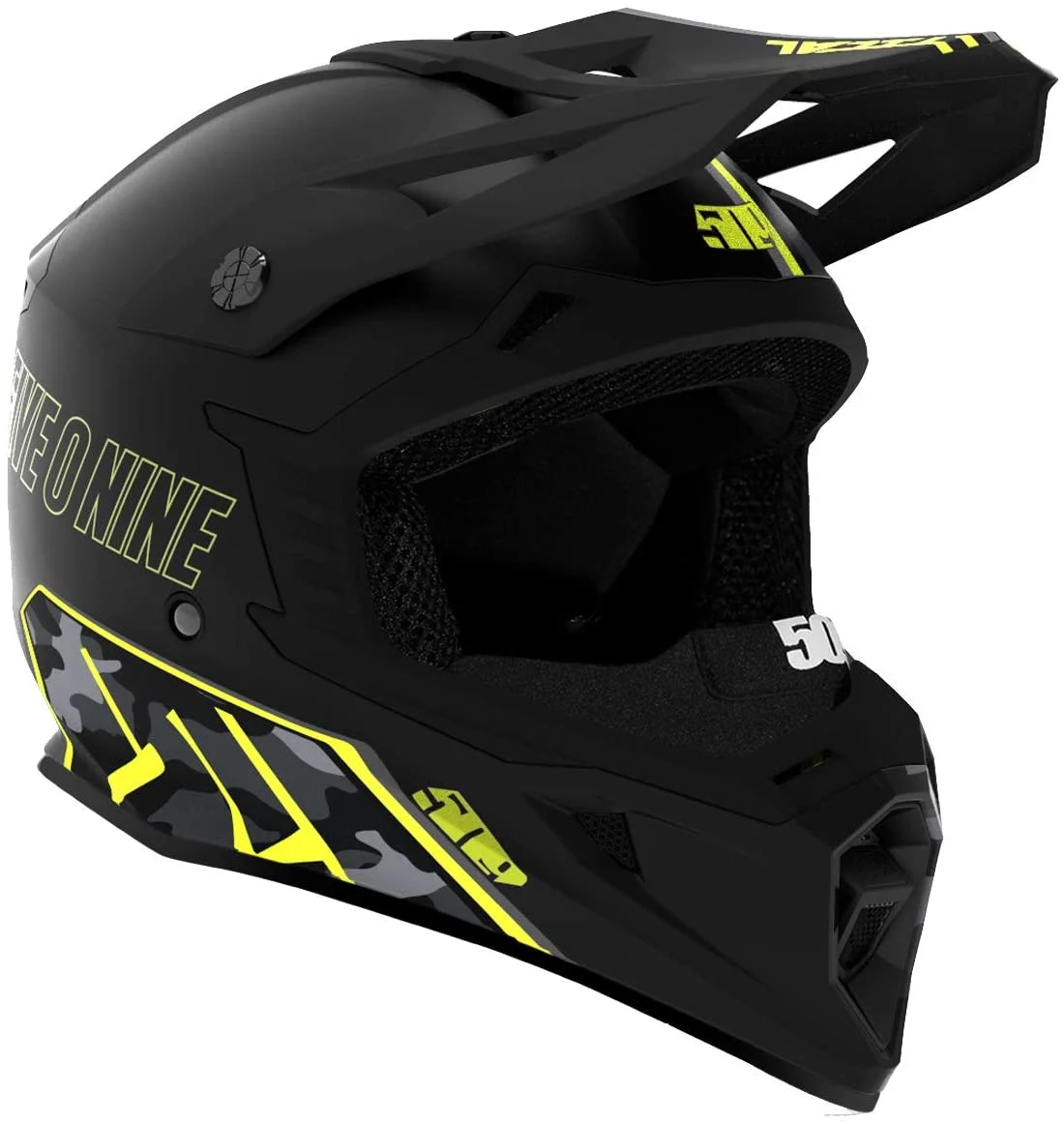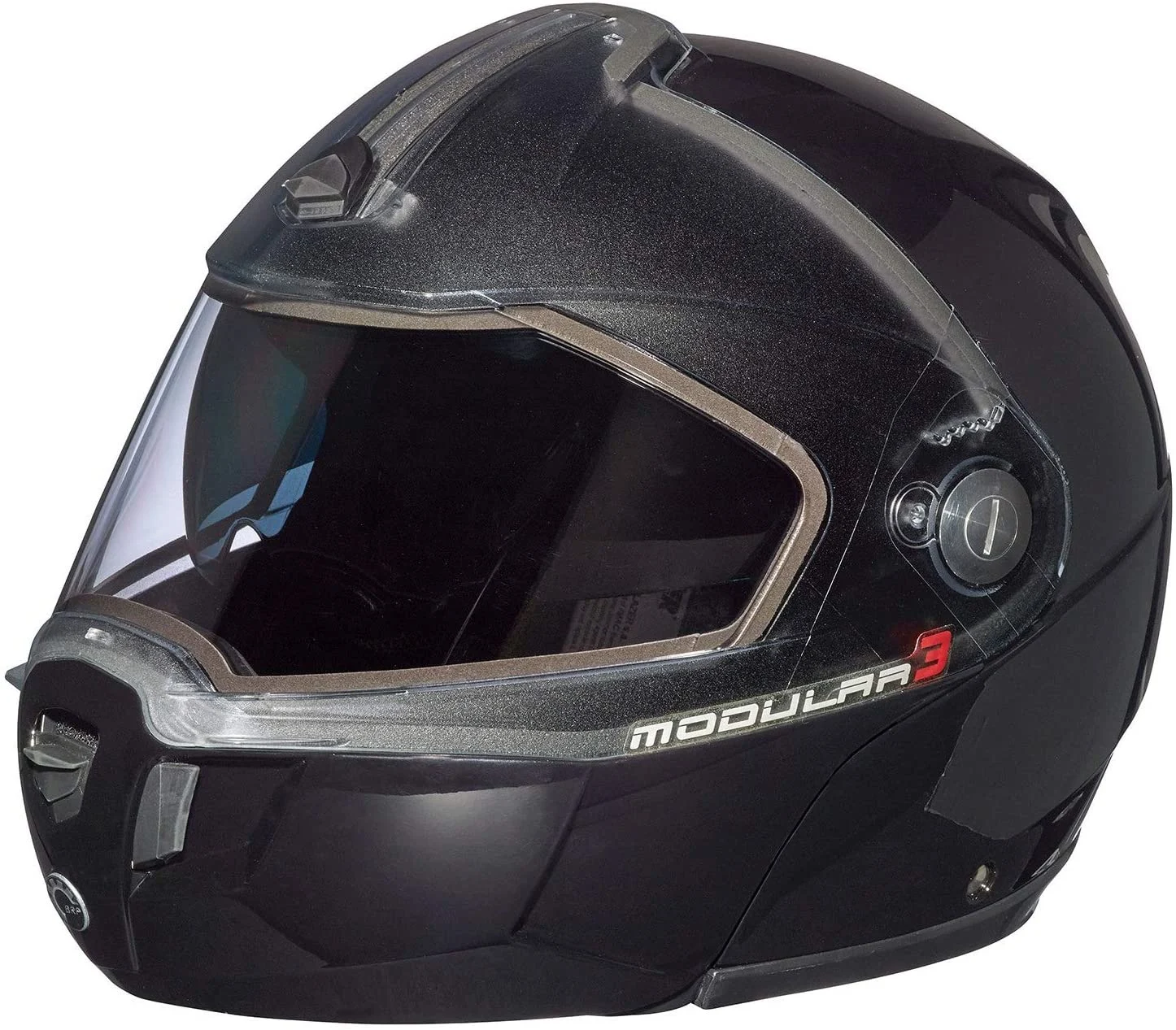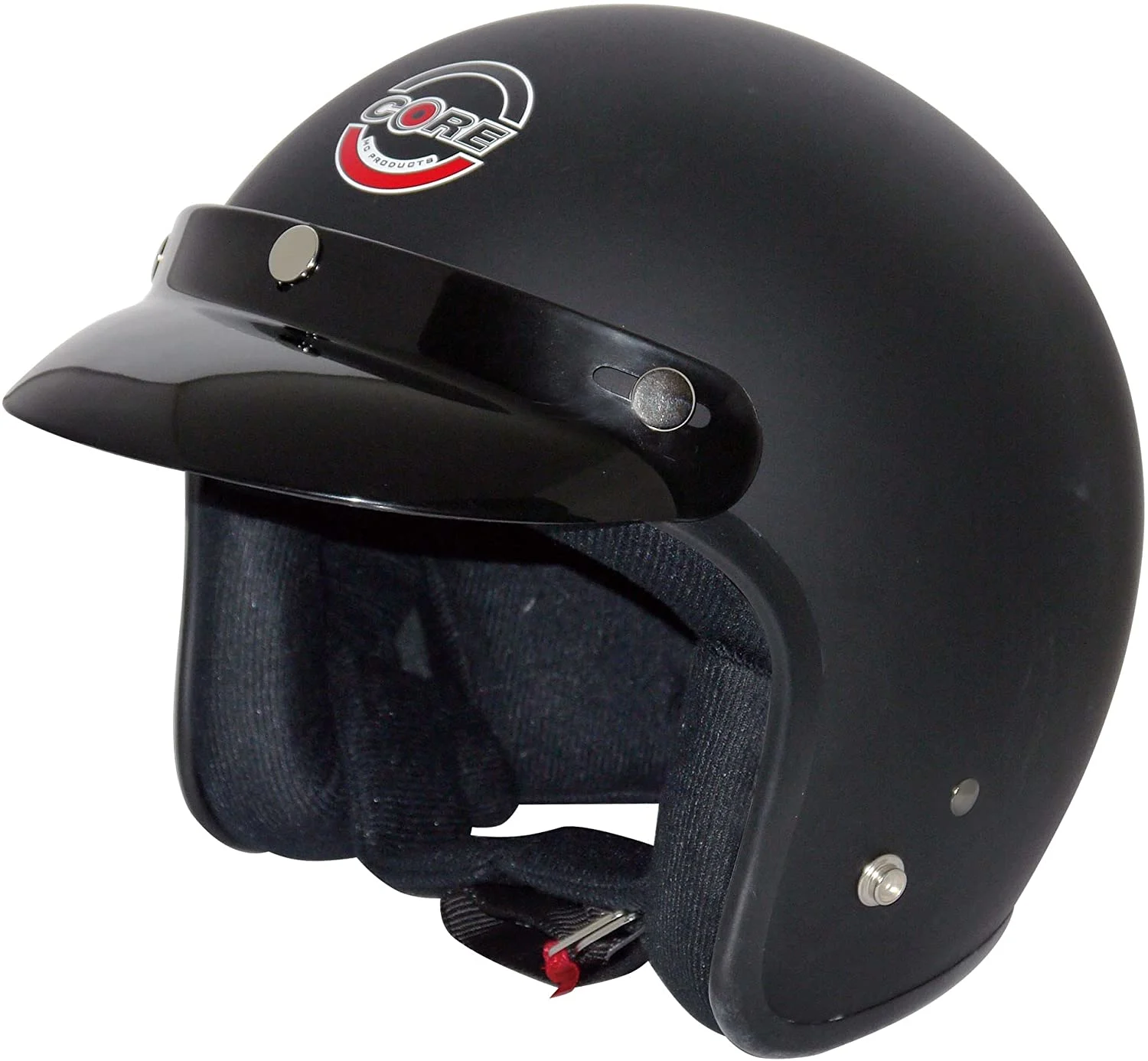_We may earn revenue from the products available on this page and participate in affiliate programs. Learn more ›
_
Best Modular with Electric Face Shield

FXR Maverick Modular Team Helmet
Best Tactical

509 Tactical Helmet
Best Modular

Ski-doo Modular 3 Snowmobiling Helmet
Snowmobile helmets keep us safe in those worst-case scenarios that may arise when we’re cutting lines through powder or racing down a trail. They also tend to keep us warm as 30 mph winds are ripping past our faces. You may not be undertaking a 555-mile snowmobiling adventure
, but a helmet is just as important to the casual rider as it is to the serious sledder. But what should you look for in a snowmobile helmet?
There’s more to the best snow mobile helmets than just the protective outer shell and soft inside pads. Will you want to talk to you fellow snowmobilers on a communication system? Are you going to be Snocross racing, or casually sledding with friends? Does it tend to be very cold when you’re out, or are you more of a fair weather snowmobiler?
This guide will address the differences between a modular helmet and an open face helmet, a full face helmet and a tactical helmet. And it includes some helmets with features that you might not know existed. Scroll through our guide to find the best snowmobile helmet for you.
Best Modular: Ski-doo Modular 3 Snowmobiling Helmet-Black
Best Modular with Electric Shield: FXR Maverick Modular Team Helmet
Best Open-Face: Core Helmets Hunter Safety Deluxe Open Face Helmet
Best Tactical: 509 Tactical Helmet
Best Snow Helmets: Reviews and Recommendations
Best Modular: Ski-doo Modular 3 Snowmobiling Helmet-Black

When you want options and don’t want something too fancy, this helmet is a wise choice. Ski-Doo
This Ski-Doo helmet is advertised as the latest generation of the first snowmobile helmet “designed from a clean sheet of paper to address the issues of cold weather use,” according to the company. It has a large eye opening for optimal peripheral vision, and a retractable sunshield that raises and lowers with the touch of a button. It meets all the safety standards, and has that convenient jaw that lifts to make your snowmobiling life that much easier.
Best Modular with Electric Shield: FXR Maverick Modular Team Helmet

The electric face shield eliminates fogging and frosting. FXR
This Maverick Modular helmet by FXR has a lightweight, advanced polymer alloy shell with a strengthened, removable peak that reduces lift and drag at high speeds. But the real feature here is the integrated drop-down sun shade and easy to use face shield. It is electrically heated and is anti-fog, anti-scratch, UV filtering, distortion free and includes a power cord. It also has adjustable ventilation and removable (and, more importantly, washable) breath box and chin skirt.
Best Open-Face: Core Helmets Hunter Safety Deluxe Open Face Helmet

It has classic looks, and is finished with automotive paint to guard against scratches. Core Helmets
Go back in time in style, but not in safety, with this vintage helmet. The look says retro-cool and will work on a snowmobile or motorcycle. It’s made with an injection thermoplastic alloy shell, finished with automotive paint that makes it scratch resistant, and has a plush, breathable, nylon interior. It also meets Department of Transportation standards. You won’t want to sign up for a race in this, but it will keep you safe on those lazy rides.
Best Tactical: 509 Tactical Helmet

The helmet comes in a variety of colors and has a removable liner. 509
This Snocross helmet, also known as a tactical helmet, has an aggressive look along with a safe, durable polycarbonate outer shell. Expect it to fit snugly with EPS head foam and a premium removable liner. The eye port opening ensures a perfect fit with any 509 goggles, offering maximum peripheral vision with minimal exposed skin. The helmet meets all the required safety standards to help you feel safe as you squeeze your throttle.
Everything You Need to Know Before Shopping for Snowmobile Helmets
There are hundreds of brands of snowmobile helmets available. When fitted properly, all will offer some degree of protection on the trail, but many are better for some scenarios than others. Before you shop, consider how you will be using the helmet. How long will you have it on? Do you stop often? Do you have issues with fogging or frosting? Will you want to communicate with others in your party while you’re riding? Here’s how to hone in on the best one for you.
Related: Helmet Cam Footage of Snowmobiler Rescued from Avalanche
Will You Be Stopping Often to Talk, Drink, and Eat?
If you’re riding in really cold environments, a full face helmet is likely the one for you. But for those of us riding in places where it could be sunny and warmer on some of those epic powder days, or if we want to be able to stop and talk to friends to plan and coordinate the next ride, consider a modular helmet.
Modular snowmobile helmets are built to offer you the best of both worlds, the protection of a full-face helmet when riding, but the freedom to lift up the jaw, or chin bar, to talk to people or when you simply need a break. With a modular helmet, not only can you lift the chin bar to talk, you also don’t have to take your entire helmet off to grab a drink or eat some snacks.
Does Your Face Shield Fog Up or Frost Over?
Sometimes companies solve problems for us that seem so basic but are a bigger plague to our enjoyment than we ever realized. A fogged-up face shield is one of those. Unless you’re using an open face helmet, almost all of us have likely experienced a fogging issue in our helmets. We can’t help it. We breathe, that breath is humid, and before we know it, we’re trying to peer out of little sections of glass that are still clear. Then we inevitably have to stop, wipe the shield down, and try again. Frost can be another problem on face shields, too.
Helmets with electric face shields solve the fogging and frosting problems by adding heat. They also help with any icing problems—and, of course, can add a bit more heat to your face in case you tend to run chilly.
Do You Want an Open-Face Snowmobile Helmet?
Open face snowmobile helmets come with risks: The chin isn’t covered, so if you fly off your snowmobile and land on your chest, as often happens, your chin and bottom part of your face will be exposed. It’s also open to the elements, making it potentially colder depending on your speed.
But now that we cautioned you on the possible safety issues, let’s talk about why you might want an open face helmet. If you tend to snowmobile in the spring when days are longer, temperatures warmer and you like to feel a breeze on your face, these could be a good fit. They’re also a good choice if you don’t tend to ride all that fast. Let’s say you plan to take your kids or grandkids down a groomed trail on a lazy afternoon. You don’t need something as aggressive as a tactical helmet, and might enjoy having more of your face free to experience even more of the outdoors.
Will You Be Participating in Snocross?
Snocross riders and racers can hit speeds of up to 60 mph and jump up to 30 feet in the air, launching riders as much as 130 feet away from their machines. At its most basic, it’s a combination of snowmobiling and motocross, where snowmobilers race across either natural or manmade trails. While it’s a popular enough sport that it became an official part of the X Games in the late 1990s, it is still a fun way for adrenaline seekers to compete with friends in their mountain backyards.
Snowmobile gear for Snocross varies from gear for casual sledding. To compete, you’ll often need leather boots, shin guards, elbow pads, neck braces, and upper body protection. Hearing protection may also be required. The helmets vary too, but often include features generally found only on Snocross-specific helmets.
Safety Tip: When to Replace Your Snowmobile Helmet
According to nearly every major safety certification body, including the Department of Transportation, you should replace your snowmobile helmet every three to five years. But if you’ve been in a crash, or if you see signs of wear such as cracks or dents, you should replace the helmet immediately.
A Final Word on Shopping for the Best Snowmobile Helmets
Best Modular: Ski-doo Modular 3 Snowmobiling Helmet-Black
Best Modular with Electric Shield: FXR Maverick Modular Team Helmet
Best Open-Face: Core Helmets Hunter Safety Deluxe Open Face Helmet
Best Tactical: 509 Tactical Helmet
There are plenty of snowmobile helmets out there, and all of the big brands such as Ski-Doo, HJC helmet, and 509 Helmet offer options that keep your head safe. From there, think about what feature is most important to you—and make sure you replace the helmet on schedule.
Why Trust Us
For more than 125 years, Field & Stream has been providing readers with honest and authentic coverage of outdoor gear. Our writers and editors eat, sleep, and breathe the outdoors, and that passion comes through in our product reviews. You can count on F&S to keep you up to date on the best new gear. And when we write about a product—whether it’s a bass lure or a backpack—we cover the good and the bad, so you know exactly what to expect before you decide to make a purchase.





